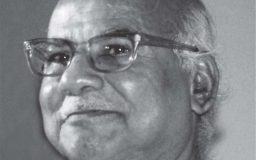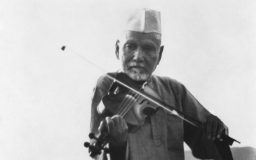Research

The origins of Bengali music are comprised of a rich and diverse lineage, deeply rooted in spiritual and ethnic traditions. The earliest generation of music traced back to Sanskrit chants and poetry but over time, Charya songs, Geeta-Govinda and ShriKrishnakirtan became the three principal pillars of the edifice of early Bengali music, giving birth to numerous genres.
The first traceable milestones in the history of music in Bengal resulted from the Vaishnava and Sufi movement. Both genres were based on philosophies on spirituality, but for the first time in the music history of Bengal, style of Vaishnava Padavali allowed music to be more grounded on ethnic traditions, as well as its mystic counterpart, and Sufism broke through the culture segregation and united the people of the time. These musical traditions, during the middle ages, were patronised by wealthy kings, nawabs and feudal lords through scores of distinguished musicians across Bengal.
It is difficult to trace a point in time when Bengali folk music first emerged, as marks of its existence are scattered throughout Bengali history. There are more than 50 subgenres of Bengali folk music, many with traceable roots to both the Vaishnava and Sufi movement. Forms of the genre portray the spirit of a region, its people and the culture of their lives. Existing lines of folk music include Bhatiali, Jari Gaan, Sari Gaan, Baul Gaan, Bhawaiya, Jhumur, amongst many others.
The 19th century, considered to be a revolutionary period for Bengali music, saw the emergence of some of the greatest composers of all time, which included Rabindranath Tagore, Kazi Nazrul Islam, Atulprasad Sen, D L Roy and Rajanikantha Sen. Composers and poets of the time also revealed deep appreciation for the ancient traditions and inspirations for some of the works were rooted in the memories of Bengal. However, this was a period of time when Bengali music entered a new era and their timeless compositions came alive in memorable renditions by a number of talented singers and musicians.
Legendary maestros such as Ustad Alauddin Khan, Sangeetacharya Tarapada Chakrabarty, Pandit Ravi Shankar, Ustad Ayat Ali Khan, Ustad Vilayet Khan and many others were also born in East Bengal, and later played an invaluable role in upholding Bengali traditions through the practice of Eastern Classical Music.
Much of Bengal’s culture lives on through the practice of its music, passed down from one generation to the next. But as we approach the era of cultural globalisation, this long history of patronisation is lost on newer generations of musicians and aficionados.
Bengal Foundation has been promoting Bengali music for decades in order to nurture and uphold the musical traditions of Bengal. The foundation is responsible for releasing a wide selection of Bengali albums to the public, conducted numerous workshops, provides scholarships to young musicians, as well as opportunities to train under distinguished musicians at the Bengal Parampara Sangeetalay. Bengal Foundation’s music programme also frequently organises a number of grand music events which include Mayar Madhuri and the Bengal Classical Music Festival, the world’s largest classical music festival in terms of number of performers on a single stage, audience capacity and duration.
Bengal Foundation’s music programme aims to pave the way for better appreciation and understanding of the fundamentals of music; as well as energise, influence and promote the music industry of Bangladesh.










